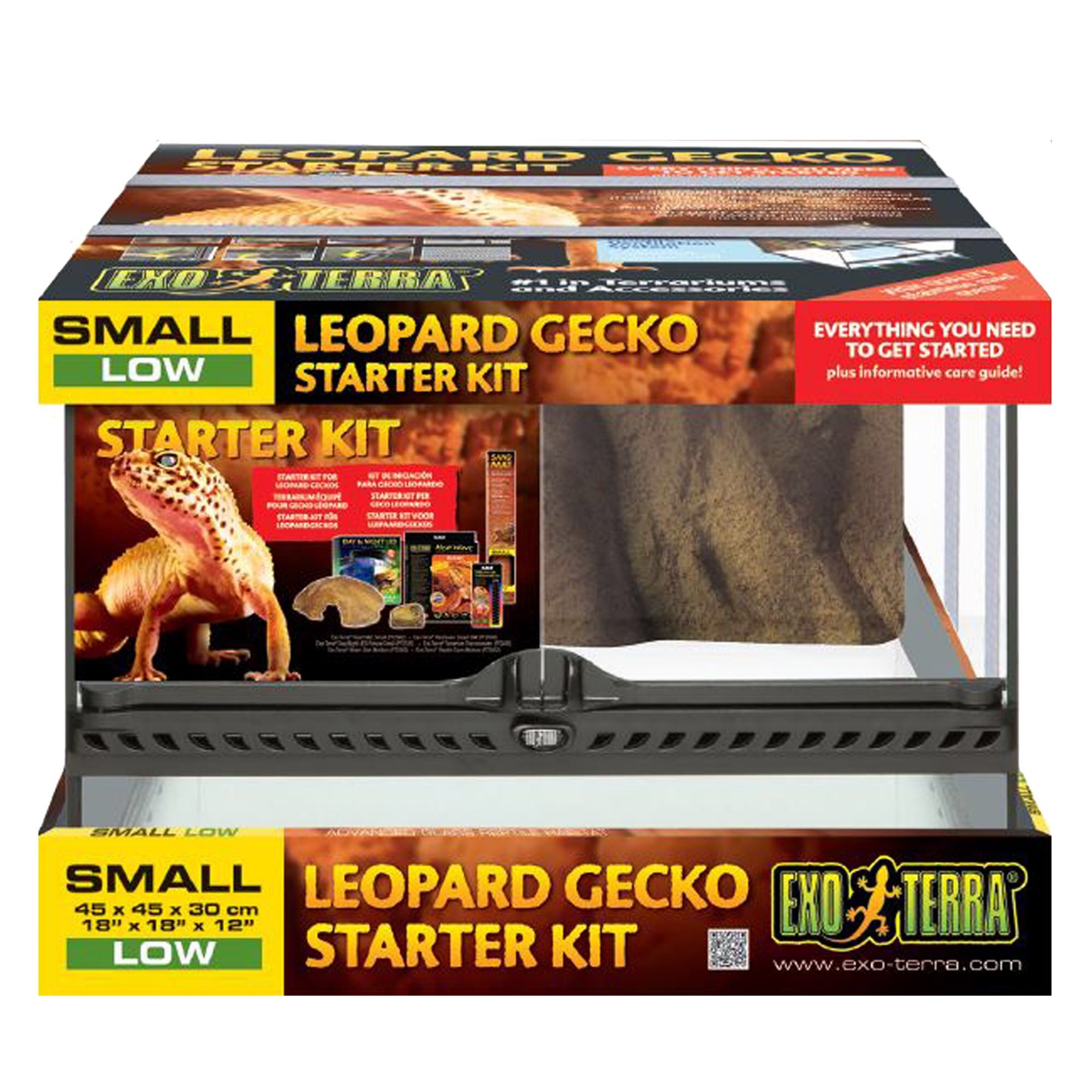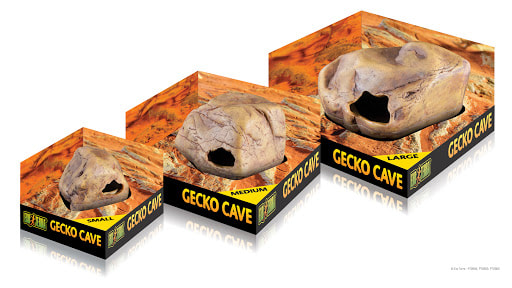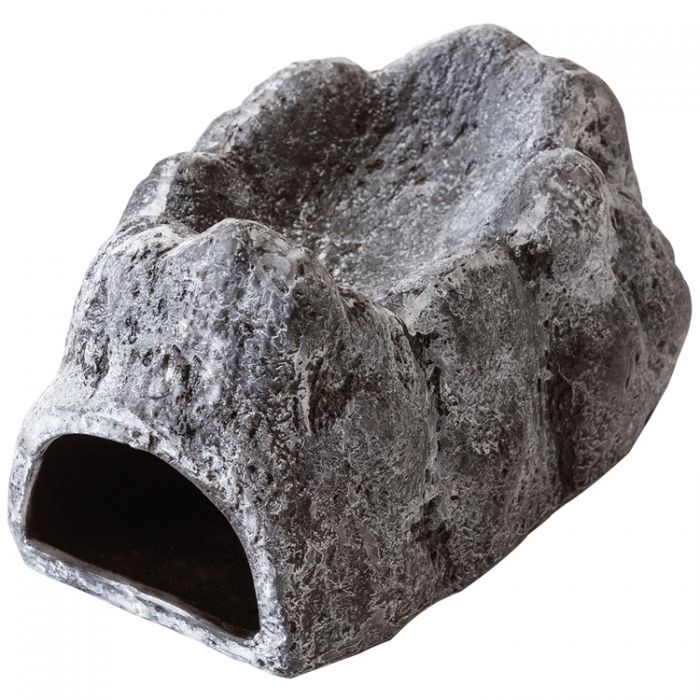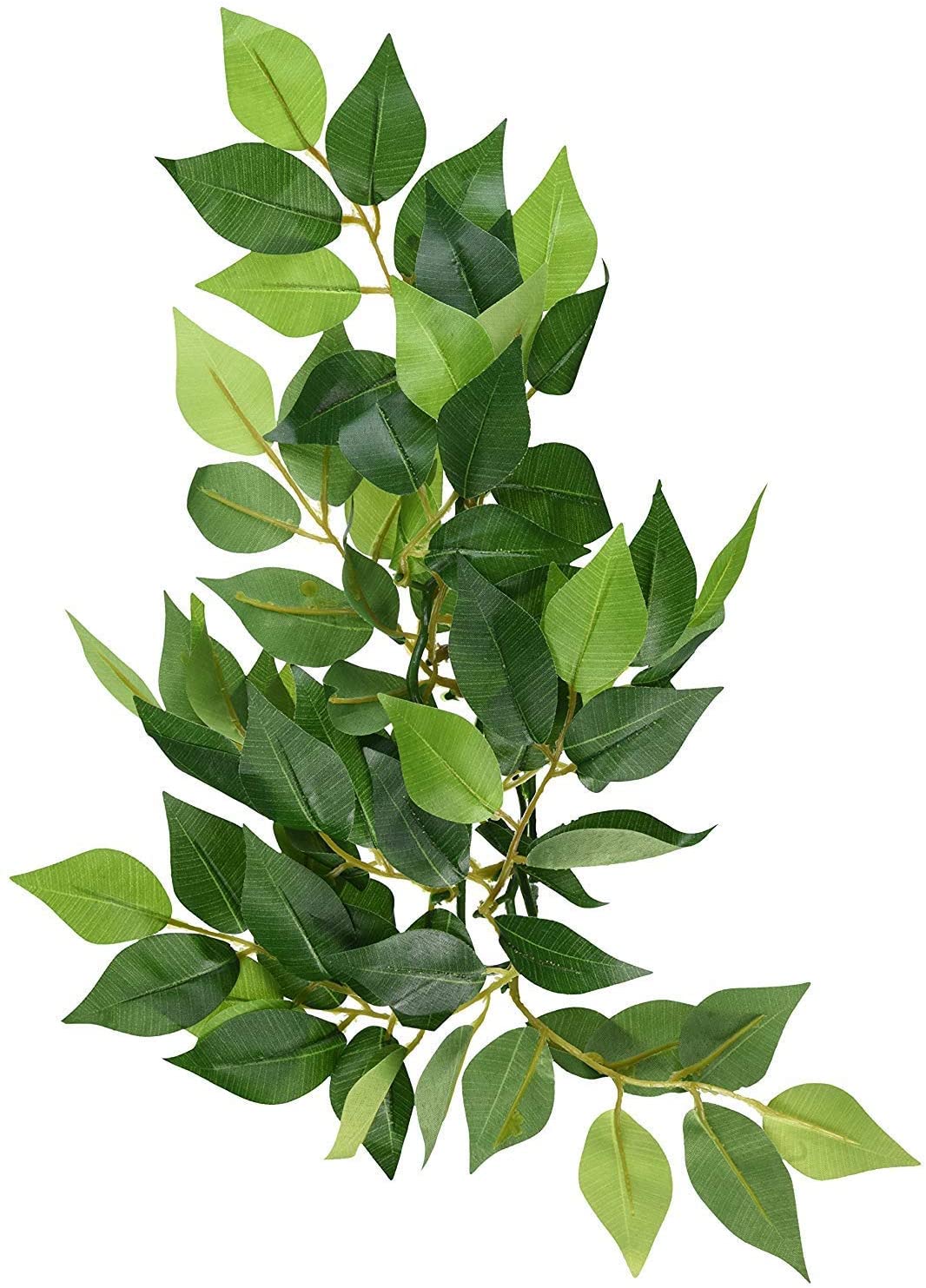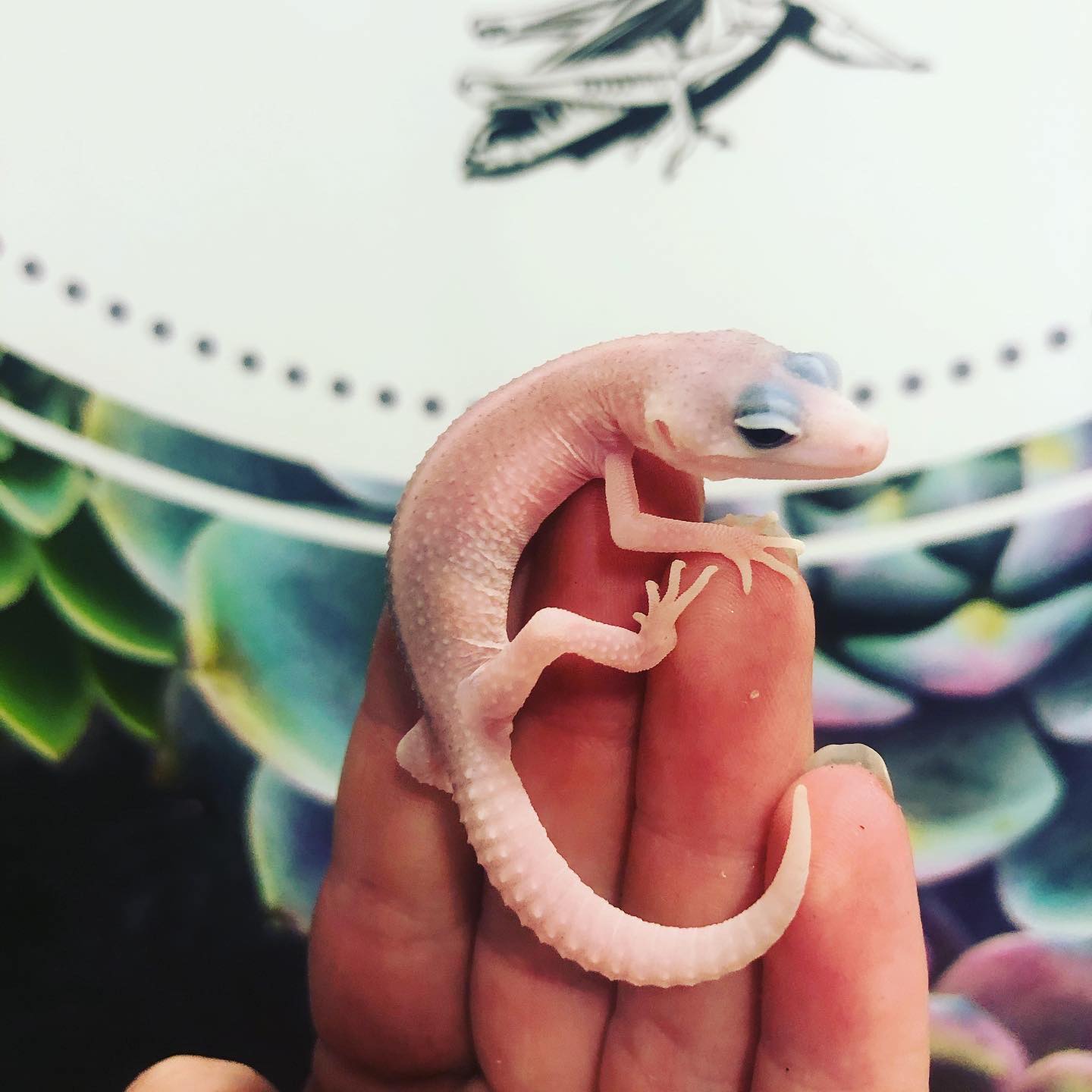
Habitat:
Terrarium: We recommend a 20-40 gallon terrarium cage, which is usually sufficient. Preference is given to a front open enclosure to reduce lamps' movement and reduce stress for handling; Imagine a bird swooping in from above. Remove all styrofoam background from inside of the tank! Placing the background on the outside prevents the insects from eating it (and by extension, the gecko), animals getting stuck behind it, geckos scratching the background and eating the debris, and any bacteria that could grow on such material. Many reptiles have lost their life or use of limbs due to the styrofoam backgrounds!
Hides: A shy, nocturnal species that require a hide on both sides of the enclosure. This shelter should be designed so the gecko can be easily removed from its hiding place, if necessary. One hide should be of an appropriate humidity for proper shedding – provide a moist hide (with moistened moss or paper towels inside it), mist the moss daily with warm water.
Heating: Heating one end of the cage allows for a temperature variation that your gecko needs. Provide a temperature gradient of 85-90°F (29.4-32.2oC) on the warm side and 78-80°F (25.6-26.7oC) on the cool side. The best heat source is an Under-tank heater used in conjunction with a thermostat to ensure your mat doesn't get too hot and cause a burn on your pet. Hot rocks and heat rope are not as safe or effective. Overhead heat is also not ideal as these animals are nocturnal and thermoregulate via the belly, but can also over-dry the enclosure and lead to shedding and appetite issues.
Lighting: UVB lighting is recommended; Use a 5.0 -7.0 UVB for 6-8 hours a day. The cage should be dark at night. Although leopard geckos are nocturnal, direct and indirect exposure to UVB radiation will benefit overall health.
Substrate: Recommend a non-particulate substrate such as a newspaper, paper towels, or textured tile such as slate. Captive-bred Geckos tend to be allergic to sand (even in the wild, it is observed they avoid making homes in overtly sandy areas!); crushed walnut shell (also very dusty) well as types of wood mulch. The loose substrate also can cause impactions when ingested and irritation of the eyes leading to infection.
Water: Be sure to provide a dish with fresh water at all times and a small-cap of calcium. Provide a shallow water dish for drinking and soaking but ensure it is easy to enter and exit to prevent accidental drowning.
Accessories: Plants, rocks and wood branches are also highly recommended as it gives cover and security to your gecko, providing enrichment when exploring the enclosure.
Cleaning: Keep your Leos' home clean! We recommend taking all the hard objects out 1-4 times per month, soaking them in a tub with hot water and vinegar for ½ hour, and cleaning all the inside surfaces with a water-vinegar mix (4parts water to 1 cleaning Alan's vinegar.) or F-10 solution. Always rinse with fresh water and allow it to dry before placing your gecko back in the tank. Spot clean daily if needed (i.e. if your gecko poops). Imagine being stuck in a room, forced to eat and live with a pile of your waste, no fun!
Feeding:
Mostly insectivorous – feed a variety of prey items such as:
- wax worms (refridgerate)
- crickets (gut load)
- mealworms (gut load and refrigerate)
- *super worms (gut load)
- *phoenix worms (refrigerate)
- *hornworms (feed superhorn chow)
- *giant mealworms (refrigerate)
- *silkworms (feed mulberry chow)
- *Probug silkworm pupa
- *Probug DUBIA roaches
Prey insects should be "gut-loaded" with a nutritious diet for at least 12 hours before feeding to your gecko; This is typically done with a product called bug grub by repashy or with squash, sweet potato or lettuces.
Dust feeder insects with a calcium supplement 3-4 times per week. We also provide the calcium powder in a shallow dish.
We offer our baby geckos a combination of the following daily: 10 crickets/ 5-10 mealworms/ 2 hornworms/ 6 wax, as they grow, increase worm size to the thickness of the insect to no larger the space between the eyes, to prevent impacting and choking.
Superworms are typically fed to geckos over six months of age.
Care & Handling:
Do not handle leopard geckos until they have acclimated to their new environment; typically, this is minimal one week and providing they have had a bowel movement and are eating normally.
Once your gecko is accustomed to the new home, you may start building trust and handling. It is best to start slowly, roughly 5-10 minutes a day and build as your gecko become more comfortable. Start by sitting on the floor and let your gecko crawl through loose fingers and hand-over-hand. This taming process can take several days or more. Do not squeeze or tightly hold the animal as this can cause internal damage and extra stress.
Never grab, hold or pick your gecko up by the tail; they can drop their tails! Often the tail regenerates in less than 40 days, but it will not look as consistent or long, also impacting the fat stores it once had and the wound, if not cared for, can lead to infection. Seek a qualified exotic vet if your animal loses its tail!
Do not drop or squeeze your gecko as they have soft underbellies/sides ; this causes internal damage. Do not flip them on their backs for longer than a few seconds, as this can and will inhibit breathing.
Leopard Gecko Tips & Facts
Leopard geckos can have shedding issues; if this occurs, rub them with mineral oil (especially on toe and tail tips) and provide a moist hide, which will help!
Do not leave your leopard gecko unsupervised with other pets (even other geckos) or small children. Ensure the lid is secure and sturdy if you have cats!
Leopard geckos have a life span of 10-20 years in captivity, so if at any time you are unable to care for your new family member, remember we are happy to rehome them or suggest a promising avenue in which to find an ideal new home. Never release a leopard gecko into the wild, as this will certainly mean death for them.
Co-Housing: Don't, just don't. Never Co house another species with your gecko, and after two months of age, never co house two leos. They may seem fine, then one day an animal loses a limb or worse, at best, one gecko is exerting dominance over the other; This means one animal will get less food, less heat and overall more stress. Your Leopard Gecko should bond with you, not another gecko.
Leopard Geckos are indigenous to the rocky dry grassland, caves and desert area regions of Afghanistan, Nepal, Iran, Pakistan and India!
**All information in this sheet is meant as a good start for your new gecko, please also seek advice from a qualified exotic vet.
Site by Bradley Hopkins @ SHP

